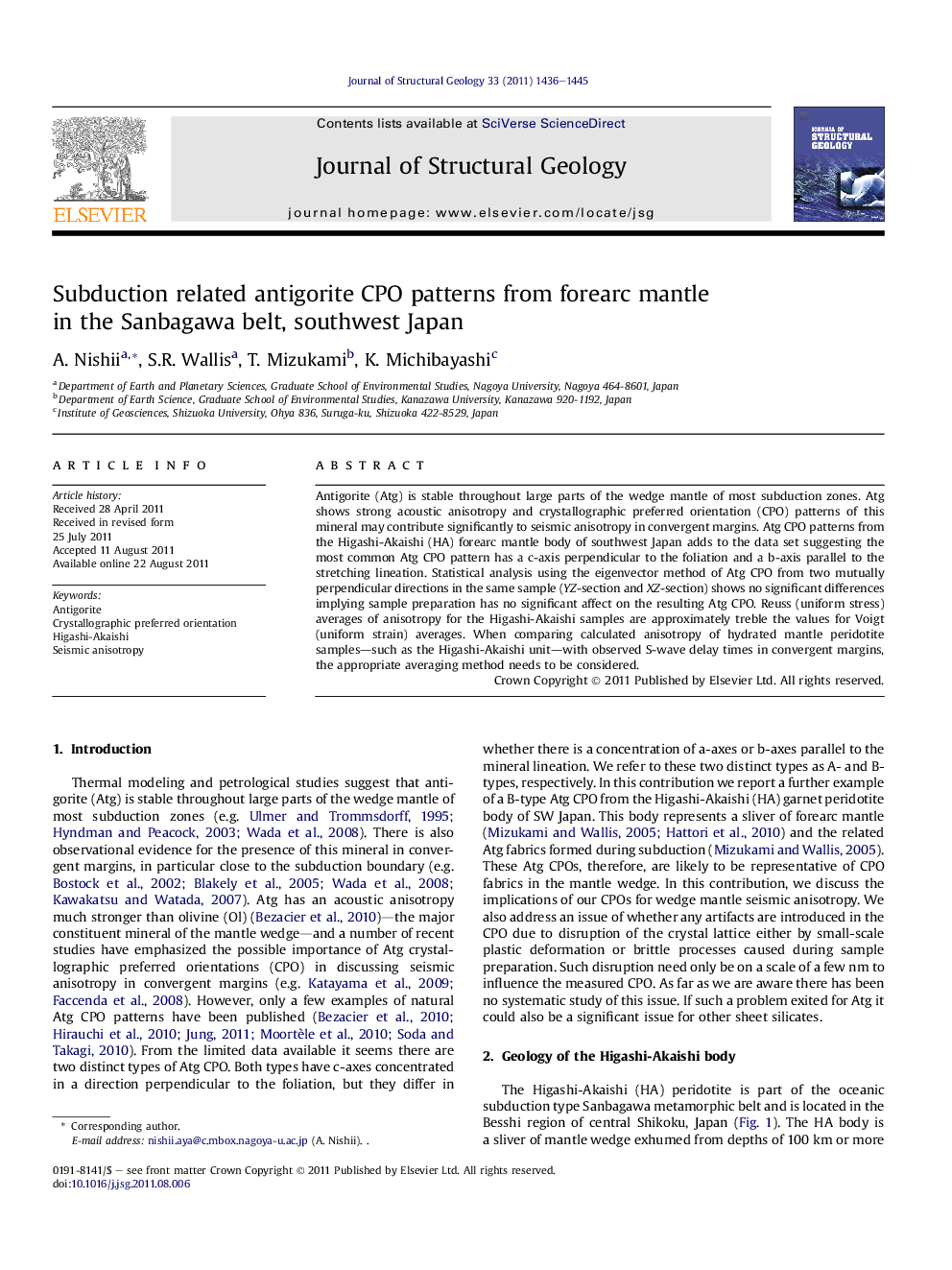| Article ID | Journal | Published Year | Pages | File Type |
|---|---|---|---|---|
| 4733309 | Journal of Structural Geology | 2011 | 10 Pages |
Antigorite (Atg) is stable throughout large parts of the wedge mantle of most subduction zones. Atg shows strong acoustic anisotropy and crystallographic preferred orientation (CPO) patterns of this mineral may contribute significantly to seismic anisotropy in convergent margins. Atg CPO patterns from the Higashi-Akaishi (HA) forearc mantle body of southwest Japan adds to the data set suggesting the most common Atg CPO pattern has a c-axis perpendicular to the foliation and a b-axis parallel to the stretching lineation. Statistical analysis using the eigenvector method of Atg CPO from two mutually perpendicular directions in the same sample (YZ-section and XZ-section) shows no significant differences implying sample preparation has no significant affect on the resulting Atg CPO. Reuss (uniform stress) averages of anisotropy for the Higashi-Akaishi samples are approximately treble the values for Voigt (uniform strain) averages. When comparing calculated anisotropy of hydrated mantle peridotite samples—such as the Higashi-Akaishi unit—with observed S-wave delay times in convergent margins, the appropriate averaging method needs to be considered.
► Antigorite(Atg) crystallographic preferred orientation (CPO) may contribute to seismic anisotropy in convergent margins. ► Atg CPO was measured. ► The pattern has a c-axis perpendicular to the foliation and a b-axis parallel to the streaching lineation. ► With statistical analysis, it has been shown no significant differences implying sample preparation has no affect on Atg CPO. ► We compared the calculated anisotropy of Voigt and Reuss averages.
